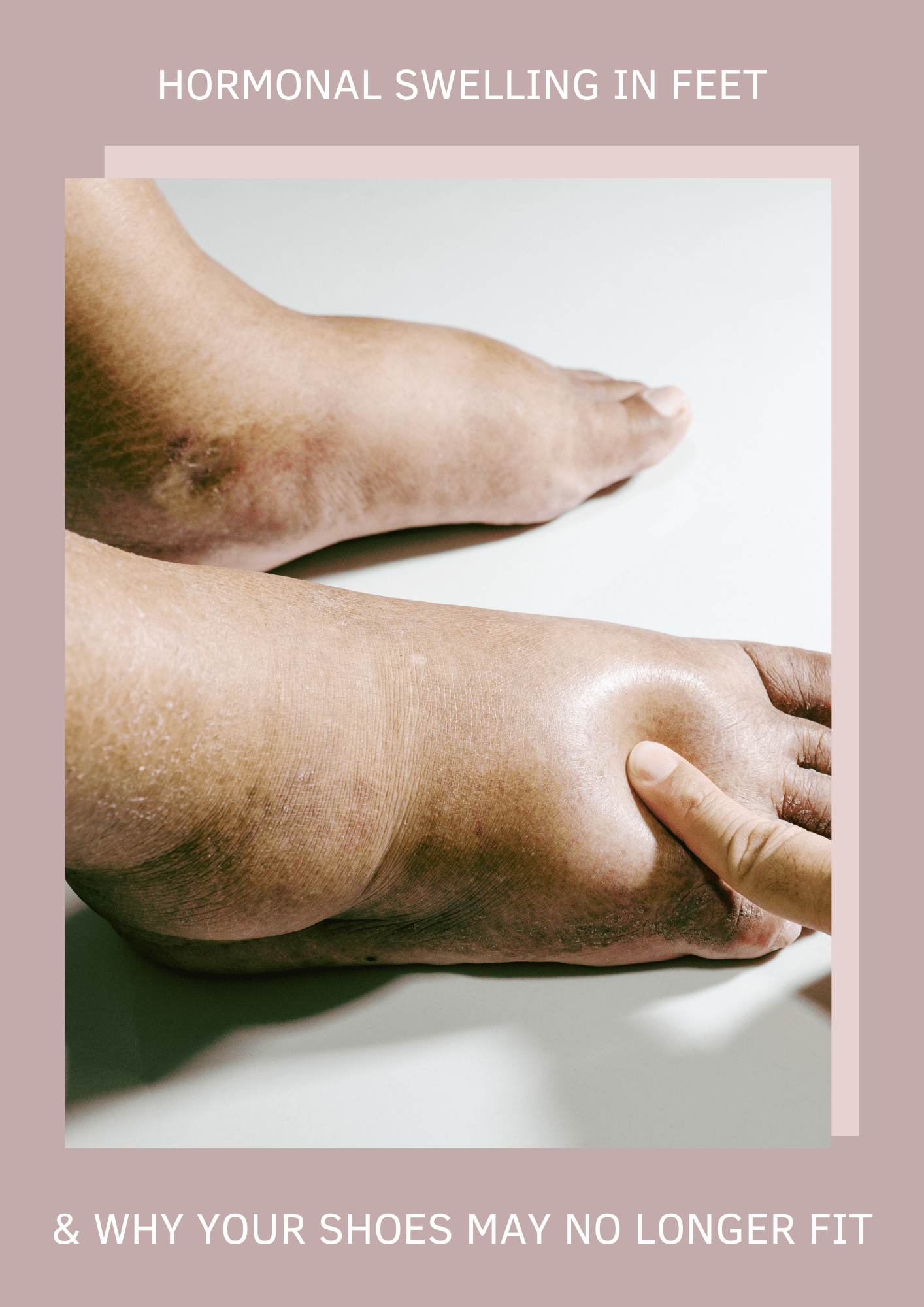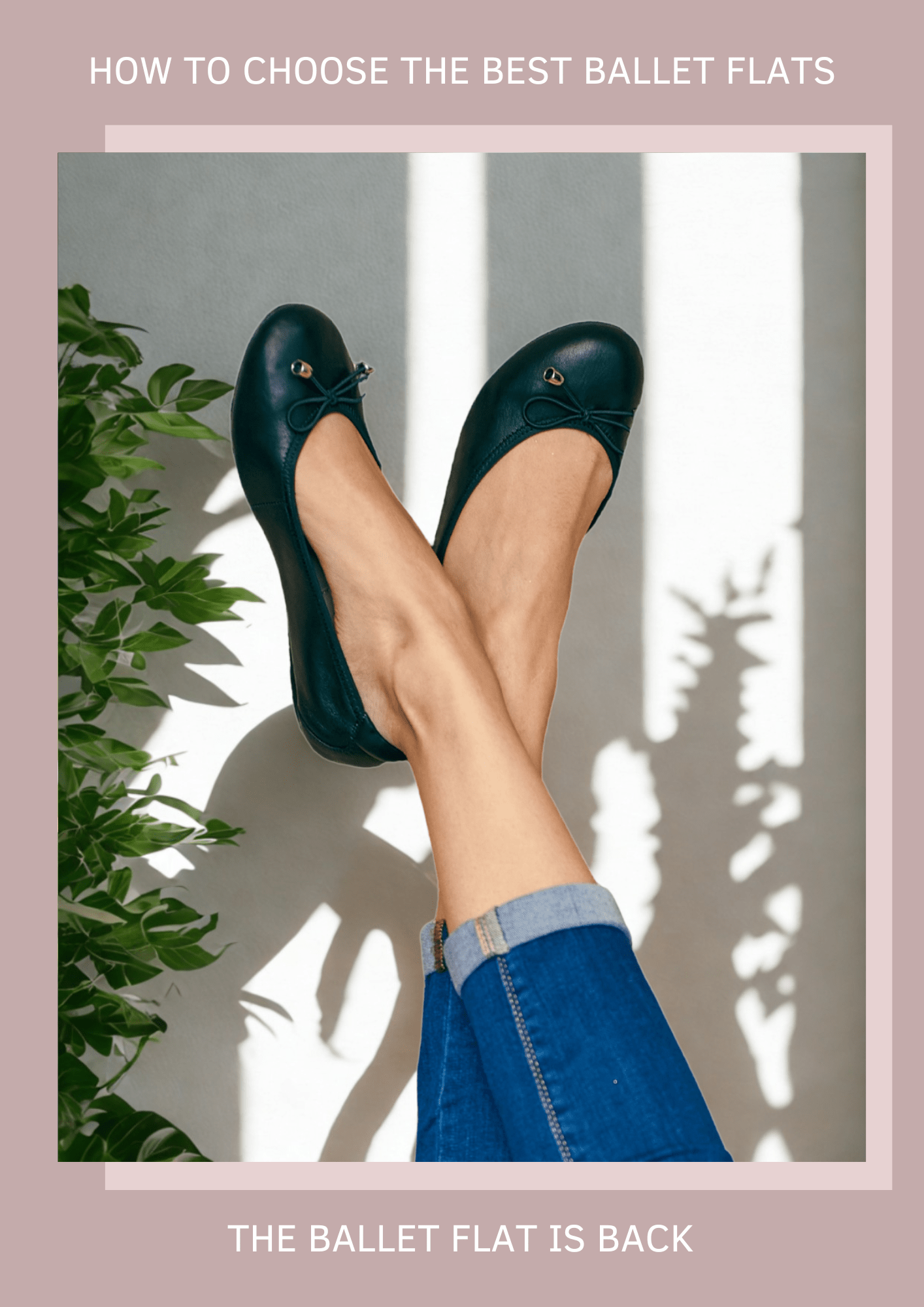Article: Hormonal Swelling of Feet and Shoe Fit

Hormonal Swelling of Feet and Shoe Fit
Hormonal Swelling & Shoe Fit: Why Your Favourite Pair May No Longer Fit
There’s a strange moment in midlife when you slip on your once-beloved shoes and something feels… off. They pinch, they rub, or they simply don’t fit the way they used to. No, it’s not in your head. Many women notice changes in their feet during perimenopause and menopause, and one of the biggest culprits is hormonal swelling.
Your feet haven’t betrayed you. They’ve simply changed. And while that may feel inconvenient (or even unfair), it’s actually quite common, and entirely manageable once you know what’s going on.
In this article, we’ll explore:
• Why hormonal changes affect your feet in midlife
• The science behind swelling, widening, and shifting shoe sizes
• Practical tips for measuring your feet
• How to choose comfortable, stylish shoes that adapt to your evolving needs
So, if your favourite pair suddenly feels like the enemy, read on. Relief, and a more comfortable fit, is possible.
Why Hormones Make Your Feet Swell
Hormonal fluctuations during perimenopause and menopause can impact far more than your mood, temperature, or sleep. They also affect the ligaments, joints, and tissues in your feet. The main hormone at play is oestrogen. As oestrogen levels decline, several things happen:
• Water retention increases → Many women notice puffiness in their hands, ankles, and feet, especially in the evening.
• Ligaments loosen → The arches of the feet can flatten slightly, leading to a wider footprint and even a half-size increase in shoe size.
• Collagen decreases → Less collagen means less elasticity in the skin and connective tissue, which can cause stiffness and soreness.
• Circulation changes → Blood flow to the extremities may slow, leading to swelling, cold toes, or a heavy, tired feeling in the feet.
Together, these changes mean your old shoes may feel tighter, narrower, or just plain uncomfortable, even if they once fit like a glove.
Do Feet Really “Grow” in Midlife?
Technically, your bones aren’t growing longer. What’s happening is more subtle. Feet spread out as ligaments lose elasticity, meaning they get wider, and not necessarily longer. Some women also lose the natural fat padding under the balls and heels of their feet, making bones more prominent and shoes feel harsher.
So, yes, your shoe size might “change.” Many women go up half a size or need a wider fit in their 40s, 50s, and beyond. This doesn’t mean you’ll never find comfortable shoes again; it just means it’s time to get acquainted with what your feet actually need now.
How to Measure Your Feet (and Why You Should)
When was the last time you measured your feet? For most adults, the answer is “not since school.” But measuring your feet regularly is one of the simplest ways to avoid discomfort and choose the right shoes.
Here’s how to do it at home:
1. Measure length: Place your heel against a wall on a piece of paper, trace your longest toe, and measure in centimetres.
2. Measure width: Wrap a soft tape around the widest part of your foot (usually across the ball). Compare with shoe sizing charts.
3. Check both feet: Many people have one foot slightly bigger than the other. Always fit for the larger foot.
4. Measure at the end of the day: Feet swell throughout the day, so this gives you the truest size.
Why Shoe Construction Matters
It’s not just about size; it’s also about how shoes are made. A beautifully crafted shoe considers more than length and width. Materials, seams, soles, and cushioning all affect fit and comfort.
If you’ve ever wondered what goes into your shoes (and why some feel kinder to your feet than others), you can read more in our blog on What Makes A Great (Foldable) Shoe. Spoiler: small design details, like seam placement and cushioning, make a big difference when dealing with swelling, bunions, or shifting arches.
Styles That Adapt to Midlife Feet
The good news? Shoe design has evolved. You no longer need to choose between comfort and style. Instead, look for styles that adapt to you, especially if your feet feel different week to week.
Here’s what to prioritise:
• Gentle elastic → Flexible openings that don’t dig into heels or ankles (see our Cocorose flats with gentle elastic trims).
• Cushioned Achilles heels → Extra padding at the back to prevent nipping and rubbing.
• Minimal seams → Especially important across bunion-prone areas to reduce friction.
• Soft, pliable leather → High-quality leather moulds to your unique foot shape.
• Double-cushioned insoles → Shock-absorbing layers protect arches and joints.
• Roomier toe boxes → Space for swelling without compromising elegance.
Our leather ballet flats and loafers and Hoxton trainers are designed with precisely these details in mind; made for movement, made for change, and made for women who want shoes that keep up with them.
Practical Tips to Ease Swelling
Shoes are only part of the picture. Lifestyle tweaks can also help minimise hormonal swelling and keep your feet feeling lighter:
• Elevate your feet after long days to reduce fluid build-up.
• Stay active with low-impact movement like walking or swimming to boost circulation.
• Stay hydrated (ironically, dehydration can make water retention worse).
• Stretch calves and arches daily to relieve stiffness.
• Alternate shoes rather than wearing the same pair every day, allowing them to air and reset.
• Choose breathable designs - leather uppers, leather linings and leather insoles are best - to keep feet cool and reduce discomfort during hot flushes.
Reframing Shoe Shopping in Midlife
For many women, realising your favourite pair no longer fits can feel frustrating, and often be very emotional. After all, shoes are more than functional; they’re tied to memories, milestones, and identity. For many women going through perimenopause and menopause, identity - and the feeling of invisibility - can become a serious issue. You can read more about why so many women feel invisible during midlife on my blog post by clicking the link.
But there’s also an opportunity here: to see shoe shopping not as a loss, but as a moment of reinvention. Finding shoes that support you - soft, flexible, cushioned and stylish - becomes an act of self-care.
Your feet carry you through every stage of life. They deserve shoes that honour where you are now.
Stepping Forward
Hormonal swelling and shifting shoe sizes are not signs of weakness. They’re simply reminders that our bodies evolve. By understanding the science, measuring regularly, and choosing shoes designed with comfort in mind, you can stay ahead of these changes.
At Cocorose London, we’ve spent years listening to women describe these very challenges. That’s why our shoes are crafted with buttery-soft leather, double-cushioned insoles, gentle elastic, and pillowed Achilles heels - all the small but mighty details that make a world of difference.
So, if your once-perfect pair doesn’t fit anymore, don’t despair. It’s not the end of style; it’s the start of finding shoes that feel as good as they look.
Frequently Asked Questions
Q: Why do my shoes feel tighter in midlife?
A: Hormonal changes during perimenopause and menopause cause water retention, loosening of ligaments, and changes in foot shape. This can make shoes feel narrower or smaller than they used to. You can read more about How Perimenopause Affects Your Feet on our blog post by clicking the link.
Q: Do feet actually grow as we age?
A: Feet don’t usually grow longer, but they can become wider as arches flatten and ligaments lose elasticity. This often means going up half a size or choosing wider-fitting shoes.
Q: How can I tell if I need a new shoe size?
A: Measure your feet (length and width) at the end of the day when swelling is highest. Always size to your larger foot and prioritise comfort over sticking to your “old” size.
Q: What shoe features are best for swelling?
A: Look for gentle elastic openings, cushioned Achilles heels, minimal seams, roomy toe boxes, and soft leathers that mould to your foot shape.
Q: Can certain shoe styles help with bunions?
A: Yes. Shoes with wider toe boxes, soft uppers, and fewer seams across pressure points can greatly reduce bunion pain. You can read more about ballet flats for wide feet and bunions by clicking the link.
Q: Should I stop wearing ballet flats in midlife?
A: Not at all. Well-designed ballet flats with support and cushioning, flexibility, and quality leather - like Cocorose’s - remain a stylish and supportive option. You can read more about soft leather ballet flats and comfort by clicking the link.



Please leave a comment if you wish
This site is protected by hCaptcha and the hCaptcha Privacy Policy and Terms of Service apply.